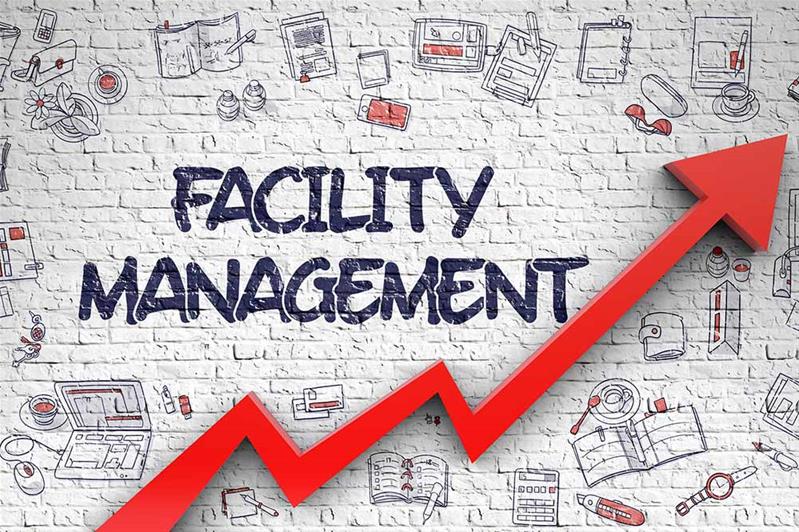Top Advantages of Total Facility Management for Streamlined Procedures
Total Facility Management (TFM) represents a calculated technique to enhancing functional performance by integrating numerous services, such as upkeep and safety and security, under a unified management structure. The question continues to be: what details benefits can companies harness from taking on TFM, and just how might these advantages change their operational landscape?
Improved Operational Effectiveness
Improved operational effectiveness is a key benefit of applying total facility management (TFM) strategies. TFM includes a comprehensive approach to managing a facility's sources, procedures, and infrastructure, eventually improving procedures. By consolidating various solutions-- such as upkeep, cleaning, security, and room management-- TFM minimizes redundancies and improves control amongst various operational functions.
The combination of modern technology further enhances this efficiency. Advanced facility management systems supply real-time data analytics, making it possible for facility supervisors to make informed decisions that boost workflow and resource allowance. Anticipating upkeep strategies, as an example, expect tools failings before they occur, minimizing downtime and expanding asset life-span.
Furthermore, TFM advertises standard procedures across various divisions, making certain uniformity and top quality in solution distribution. This harmony reduces operational disturbances and fosters an extra joint workplace. As a result, employees can concentrate on their core responsibilities, driving efficiency and boosting total efficiency.

Cost Decrease and Savings
Implementing total facility management (TFM) not just boosts operational efficiency yet likewise significantly adds to set you back decrease and cost savings. By combining numerous services under a single management framework, companies can remove redundancies and enhance processes, therefore minimizing functional costs. TFM makes it possible for better procurement methods, allowing firms to negotiate bulk acquiring arrangements with suppliers and provider, leading to reduced costs.
Additionally, TFM stresses preventative upkeep, which decreases unanticipated malfunctions and expands the life expectancy of important equipment. This aggressive technique not only reduces repair work prices yet additionally enhances the integrity of facilitiess, ensuring continuous procedures. Furthermore, power effectiveness initiatives, often an essential focus of TFM, bring about considerable financial savings on utility costs, as facilitiess are maximized for lowered energy usage.
Improved Source Management
Reliable source management is a keystone of total facility management (TFM), enabling companies to optimize the usage of their possessions and labor force. By implementing TFM approaches, organizations can thoroughly assess their source allowance, making sure that every property is made use of effectively and efficiently. This alternative technique enables the recognition of underperforming resources and the capacity for reallocation or enhancement.
On top of that, TFM promotes the assimilation of technology for real-time monitoring of resources, which aids in forecasting upkeep requirements and avoiding pricey downtime. By leveraging data look at more info analytics, organizations can make enlightened choices about resource implementation, eventually boosting performance and reducing waste.
Additionally, TFM advertises a society of continuous enhancement, encouraging groups to routinely examine and fine-tune their resource management practices. Total Facility Management. This positive stance not just decreases functional disruptions however also promotes technology, as staff members are equipped to suggest enhancements based on their direct experiences with resource utilization
Streamlined Communication Networks
In total facility management, structured interaction channels play a crucial duty in cultivating cooperation and effectiveness across groups. Effective interaction makes certain that all stakeholders, consisting of facility supervisors, upkeep team, and provider, are aligned browse around here with functional requirements and business goals. By developing clear lines of interaction, teams can swiftly address worries, share updates, and implement services, therefore lessening downtime and boosting performance.
With streamlined communication platforms, details is easily available, permitting real-time updates on upkeep requests, resource appropriation, and task timelines. This openness not just decreases misconceptions but likewise equips staff members to make educated decisions quickly. Structured interaction facilitates far better sychronisation throughout emergencies, guaranteeing that all employees are notified and can react without delay.

Boosted Focus on Core Activities
A key advantage of total facility management is the boosted focus on core activities, enabling companies to concentrate on their primary company objectives - Total Facility Management. By outsourcing non-core features such as security, cleaning, and upkeep, companies can reroute their sources and power in the direction of tactical initiatives that straight add to their affordable advantage and growth
Total facility management integrates various operational tasks under a single umbrella, fostering efficiency and minimizing redundancy. This loan consolidation not only enhances procedures yet additionally enhances liability, making sure that every facet of the facility runs harmoniously without drawing away focus from what absolutely matters-- core organization features.
Moreover, this technique allows workers to devote their effort and time to tasks that drive technology and boost client fulfillment, as opposed to getting bogged down by functional obstacles. With a trusted facility management companion taking care of daily procedures, companies can you can try this out accomplish greater dexterity, respond swiftly to market adjustments, and preserve a sharper concentrate on their goal.
Eventually, increased concentrate on core activities causes improved general performance, enabling companies to enhance their market placement and satisfy their strategic goals better. - Total Facility Management
Conclusion
To conclude, Total Facility Management considerably boosts operational effectiveness by settling vital services and leveraging information analytics for informed decision-making. Expense decreases and enhanced source management contribute to general financial savings, while streamlined interaction networks foster collaboration among stakeholders. By permitting companies to focus on core activities, TFM not just maximizes performance but likewise enhances market positioning. The assimilation of these advantages underscores the significance of TFM in accomplishing lasting functional quality.
Total Facility Management (TFM) stands for a strategic approach to enhancing operational efficiency by integrating numerous solutions, such as upkeep and security, under a unified management structure.Boosted functional performance is a main benefit of executing total facility management (TFM) approaches. Advanced facility management systems supply real-time information analytics, allowing facility managers to make informed choices that boost process and resource allotment.Executing total facility management (TFM) not only increases operational performance however also considerably contributes to set you back decrease and cost savings.Efficient resource management is a keystone of total facility management (TFM), making it possible for organizations to optimize the usage of their possessions and workforce.